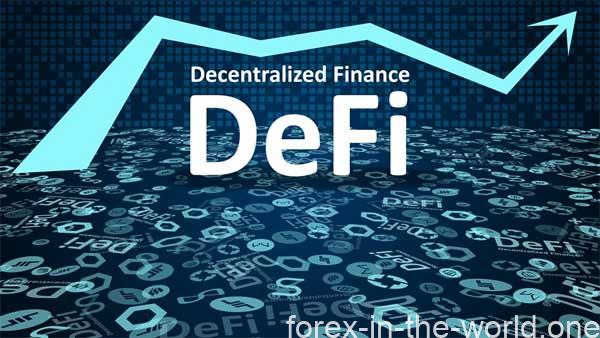In the world of decentralized finance (DeFi), one of the most lucrative and controversial methods of earning returns on investments is through yield farming. Yield farming, also known as liquidity mining, is a practice that allows cryptocurrency holders to lock up their holdings, which in turn earns them rewards. But while it can be highly profitable, yield farming also brings its own set of risks and challenges. This article aims to explore the strategies, rewards, and risks of yield farming in DeFi.
Understanding the Basics: What is Yield Farming in DeFi?

Yield farming is an innovative process in DeFi that allows cryptocurrency holders to earn rewards by lending or providing liquidity to a DeFi platform. The process involves locking up cryptocurrencies in a smart contract-based liquidity pool. These locked funds are then used by the platform to facilitate lending and borrowing activities. Yield farmers, in return, earn fees or other types of rewards.
The concept of yield farming was popularized by the DeFi platform, Compound, which started distributing its COMP governance token to lenders and borrowers. As a result, more participants were incentivized to use the platform, thereby ensuring the liquidity and stability of the lending market. Since then, many other DeFi platforms have implemented similar systems, leading to an explosion in the popularity and profitability of yield farming.
However, to be effective in yield farming, one must understand the complexities, strategies, and risks associated with it. Yield farming is not a simple process of depositing funds and reaping rewards. It requires a deep understanding of the DeFi market, smart contracts, and blockchain technology.
Key Strategies to Maximize Returns in Yield Farming

To effectively maximize returns in yield farming, it’s crucial to understand and implement various strategies. Here are some key strategies:
- Choosing High-Yield Pools: The first strategy is to choose pools that offer high returns. However, keep in mind that these high-yield pools often come with higher risks.
- Diversification: Instead of focusing on a single pool, diversify your investments across multiple pools to reduce risks.
- Compounding: This is the process of reinvesting the earned rewards back into the pool to earn more rewards.
In addition to these strategies, yield farmers also need to stay updated with the latest developments in the DeFi space. This involves keeping an eye on new platforms, high-yield pools, and changes in the DeFi market.
Navigating Risks: What You Need to Know About Yield Farming

While yield farming can be highly profitable, it is not without risks. Some of the key risks involved in yield farming include:
- Market Risks: The DeFi market is highly volatile, and changes in the market can affect the value of the locked tokens.
- Smart Contract Risks: There’s a risk of bugs, exploits, or hacks in the smart contract that’s used for yield farming.
- Impermanent Loss: This is the risk that the value of the deposited token decreases compared to holding it in the wallet.
In spite of these risks, many participants are attracted to yield farming due to its potential for high returns. However, it’s essential to understand these risks and take measures to mitigate them.
The Potential Rewards: Profiting from Yield Farming in DeFi

The main attraction of yield farming is its potential for high rewards. Yield farmers can earn returns in several ways:
- Fees: Yield farmers earn transaction fees from the borrowers who use the liquidity pool.
- Farming Tokens: Many platforms reward yield farmers with their own native tokens.
- Price Appreciation: If the price of the locked token or the reward token increases, yield farmers can make significant profits.
However, these rewards are not guaranteed and depend on various factors such as the volatility of the DeFi market, the stability of the platform, and the value of the locked and reward tokens.
Smart Contract Risks: A Key Consideration in DeFi Yield Farming

One of the key risks in yield farming is related to smart contracts. Smart contracts are automatic, self-executing contracts with the terms of the agreement directly written into code. They are the backbone of DeFi and are used to facilitate transactions in yield farming.
However, smart contracts are not immune to risks. Bugs in the code, lack of auditing, and unforeseen exploits can lead to the loss of funds. In some cases, hackers have exploited vulnerabilities in smart contracts to drain funds from DeFi platforms.
To mitigate these risks, it’s crucial to only use DeFi platforms that have undergone thorough smart contract audits. Users should also be aware of the risks and be prepared to take a loss.
Yield Farming: The Future of Investment in the DeFi Space

Despite the risks, yield farming continues to grow in popularity. With its potential for high returns, it’s attracting more and more investors to the DeFi space. The growth of yield farming is also driving innovations in DeFi, leading to the development of new platforms, products, and services.
However, the future of yield farming is not without challenges. Regulatory pressure, scalability issues, and the volatility of the DeFi market could affect its growth. Regardless, yield farming has cemented its place in the DeFi space and will continue to be a key player in the future of decentralized finance.
| Comparison | Traditional Investing | Yield Farming |
|---|---|---|
| Returns | Lower returns | Potential for high returns |
| Risks | Lower risks | High risks |
| Accessibility | Regulated, limited access | Open to anyone with internet |
| Control | Controlled by financial institutions | Controlled by code |
| Transparency | Limited transparency | Complete transparency due to blockchain |
In conclusion, yield farming represents a new frontier in the world of decentralized finance. It has revolutionized the way users earn returns on their investments, offering potential for high returns. However, it comes with significant risks, especially related to smart contracts and market volatility. As the DeFi space continues to evolve, yield farming is likely to undergo changes and improvements, further cementing its place as a key player in the future of finance. However, as with any investment, due diligence and understanding of the risks are crucial.






The article explains yield farming well. It seems to be profitable but very risky.
The comparison between traditional investing and yield farming is very helpful. Different risks and returns.
I didn’t know yield farming could be so complex. It’s more than just earning rewards.
I learned that yield farming involves locking up cryptocurrency to earn rewards. Interesting!
Choosing high-yield pools and diversification are good strategies for yield farming.
The potential for high returns makes yield farming attractive, but the risks are also high.
Smart contract risks in yield farming are scary. It’s important to be cautious.